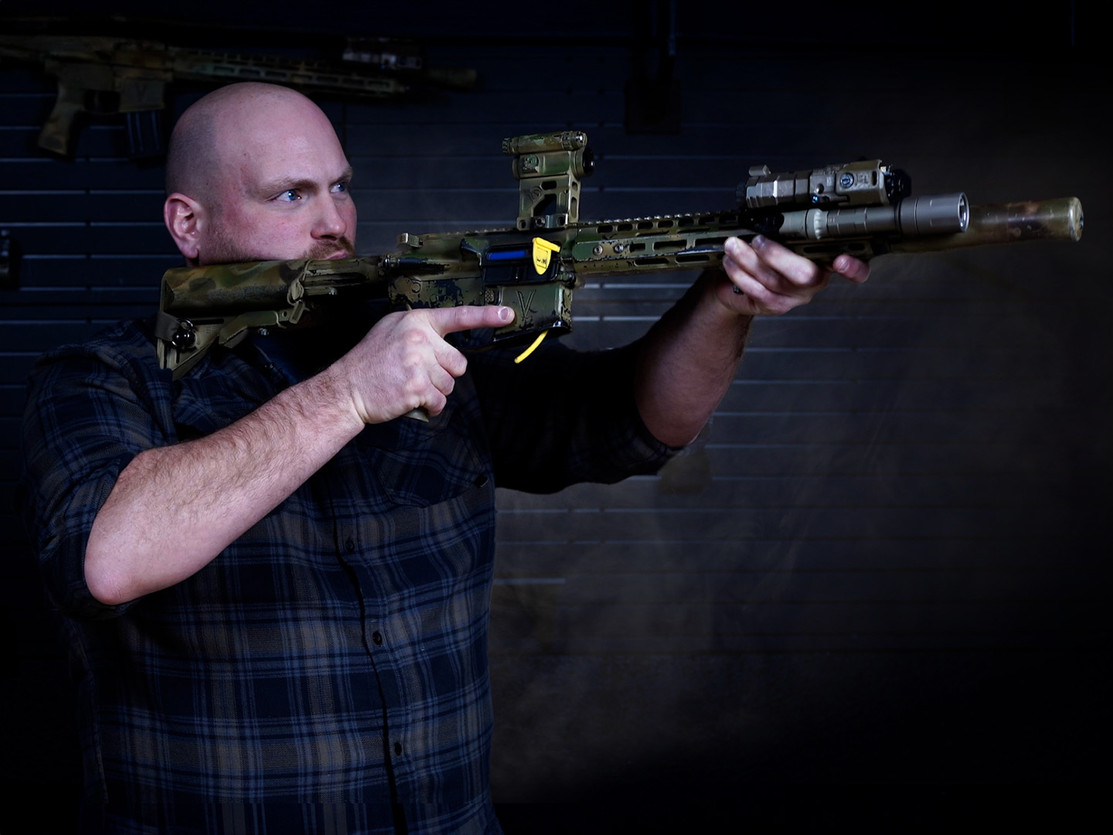Posted by Tim Marshall on Apr 2nd 2024
Maximizing Effectiveness: Building the Perfect CQB Training Rifle
Choosing the right tools for your training is as crucial as the training itself. Whether for personal preference or specific use cases, each component of your training rifle plays a vital role. In this blog post, I'll walk you through my two training rifles, highlighting the considerations and choices I've made to optimize them for close-quarters battle (CQB) scenarios.
Understanding the Use Case
Before diving into the specifics, it's essential to understand the use case. Both of my training rifles are tailored for CQB engagements, typically within 200 yards. They're non-magnified and are optimized for day, white light, and night vision scenarios. This setup allows versatility across various training environments, from well-lit indoor ranges to low-light situations and even complete darkness under night vision.
Finding the Right Configuration
For CQB, maneuverability is key. That's why I prefer a shorter barrel length, typically around 11.5 to 12.5 inches, paired with a suppressor to meet the 16-inch overall length requirement. This configuration ensures easy handling and quick target acquisition, allowing me to perform best in fast-paced environments.
Choosing Quality Components
When it comes to the components, I opt for Aimpoint optics due to their proven durability and performance. However, selecting the right optic height is also crucial, considering factors such as body type and gear compatibility. A higher optic centerline is preferred for taller individuals like myself to maintain a natural shooting position.
The Importance of Laser and White Light Integration
One feature I've come to rely on heavily is the visual override function in my laser. This allows me to have a constant aiming point whenever my white light is activated, providing enhanced situational awareness and target acquisition, especially in low-light conditions. Integrating both white light and laser into my setup has been an extremely valuable tool in many training scenarios, allowing for seamless transitions between target identification and engagement.
Balancing Experimentation with Reliability
While experimenting with new components is essential for growth, reliability remains a priority, especially in life-or-death situations. While I've been testing the SomoGear NGAL laser, a more affordable alternative to established duty-rated brands, I still rely on trusted solutions like the MAWL C1+ for my backup rifle. Essentially, my primary rifle serves as a test platform where I can determine if the components offer sufficient advantages to become integral parts of my setup. The “tried and true” components lie on my backup rifle, for an all-around reliable gun that I have plenty of experience with.
Building the perfect CQB training rifle is a continuous process of refinement and adaptation. By understanding the use case, selecting quality components, and integrating advanced features like laser and white light, you can optimize your rifle for maximum effectiveness in training scenarios. Whether you're clearing rooms or engaging targets at close range, having the right tools can make all the difference in achieving your training objectives.

